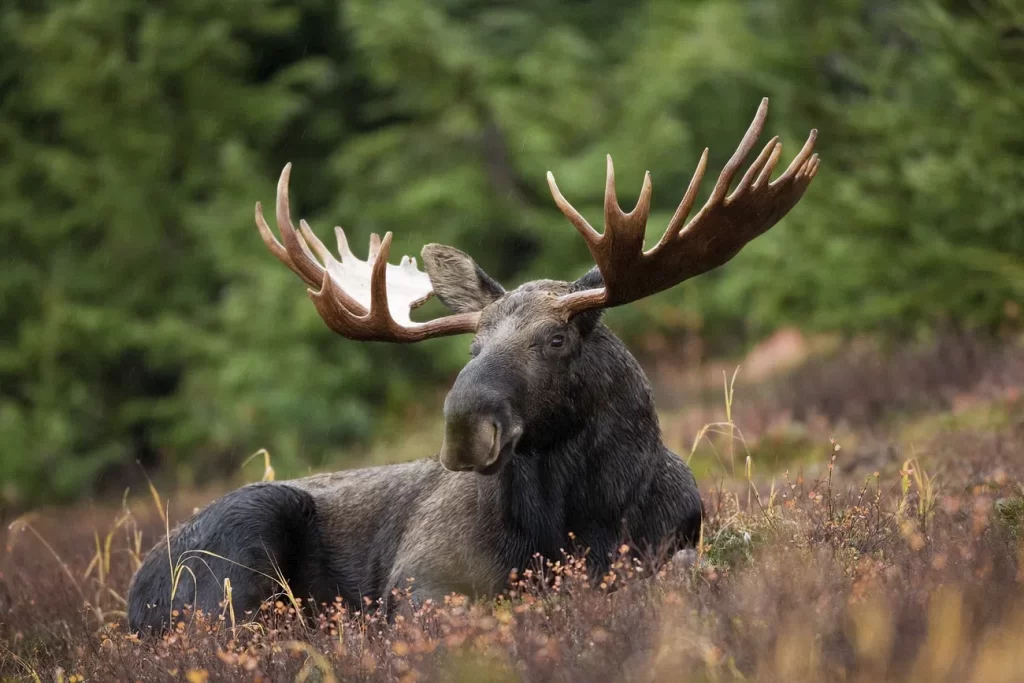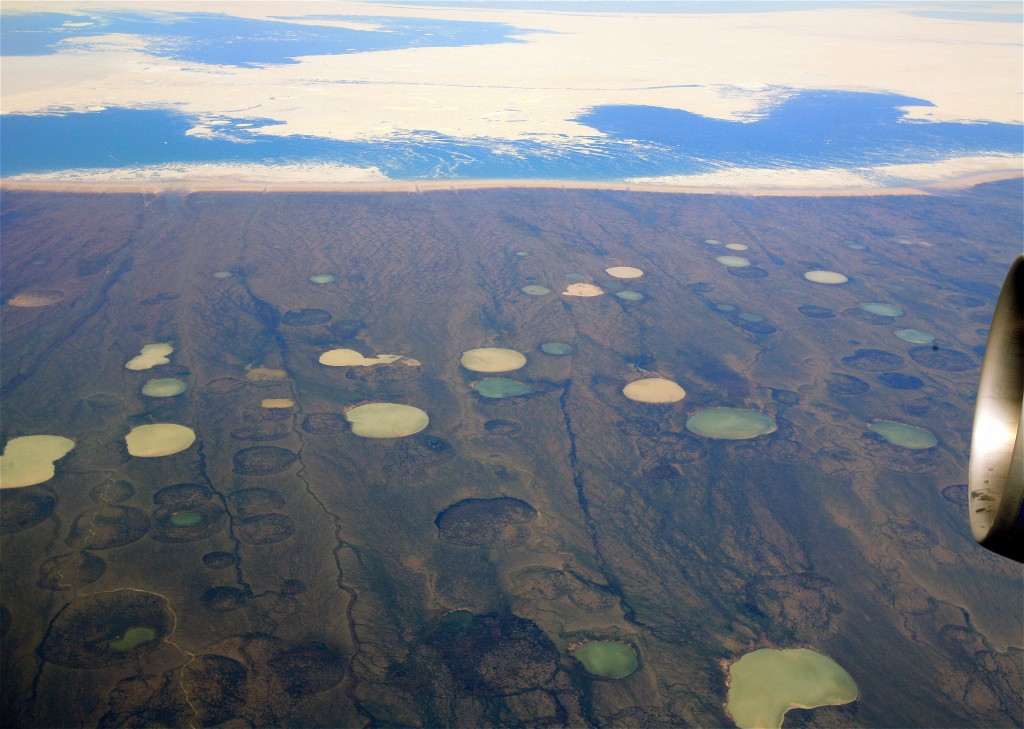
Canada, the land of stunning landscapes, vibrant cities, and breathtaking wildlife, has an allure that captivates travelers from around the globe. However, within its year-round charm, there are periods that may be considered the “worst” time to visit Canada!
The concept of the worst time is beautifully subjective, shaped by individual passions and aspirations. For instance, heavy rain might deter someone and also becomes an enchanting invitation for adventure-seekers by adding a touch of excitement to their journey. On the other hand, some people might not be fans of the crowd.
In our guide, we cover everything in detail, to determine the different times when its considered the worst time to visit Canada!
What Is the Worst Time To Visit Canada?
The worst time to visit Canada is during the winter season as Canada has extreme weather with snow storms, freezing temperatures, and daylight limitations. Traveling and communication become quite restricted during this season. Many road accidents occur because of icy slippery roads.
Flight cancellations and delayed trains are another big concern during the winter season. In a nutshell, winters are extremely unpredictable for tourists.
In northern areas, temperatures can drop well below freezing, with average lows ranging from -20°C (-4°F) to -40°C (-40°F) or even lower. In more southern regions, temperatures generally range from -10°C (14°F) to -20°C (-4°F) on average during the coldest months.

Authorities also recommend that people should refrain from any unnecessary travel plans during this season. It is always better to check the weather updates from the official website of the Government of Canada to determine if this is an appropriate time to visit or not.
Other Worst Times to Visit Canada
Apart from winter, one might want to avoid visiting Canada for these reasons:
Bug Bites and Blackflies
When bugs are high, tourism is at its low, in Canada. Biting insects like mosquitoes and blackflies cause a major nuisance for travelers.

During the warmer months, especially in forested and coastal areas, Canada experiences an influx of insects such as mosquitoes, black flies, and horseflies. This bug season, typically from May to August, can be exceptionally bothersome for outdoor activities and camping.
- Bug Bites: These pesky creatures can make outdoor adventures, camping, and hiking experiences less enjoyable. Most of the visitors get affected by bug bites in regions abundant with lakes, forests, and wetlands such as Ontario, Quebec, and the Atlantic provinces.
- Black flies: They can be quite annoying as they cut and rupture the skin to soak up blood, leading to irritation, swelling, and itching for some individuals. These tiny insects seem to be most abundant on hot, humid spring days, making mid-May to late June the prime flight period for them.
Handy Tip: To protect yourself from these relentless attackers, it is advisable to use insect repellents, wear long sleeves and pants, and choose your outdoor activities wisely during this black fly season.
Tourist Rush in Peak Season

July, a scorching and bustling month for domestic travel in the US, brings a similar scenario to Canada. As schools break for summer, American families and tourists flood the national parks and beach resorts, creating a whirlwind of activity across the country.
Coinciding with this tourist rush, Canada experiences its peak season from June to August, making it one of the worst times to visit. While it may initially appear as an opportune time to explore Canada, the reality reveals larger crowds, elongated queues, and inflated prices.
Iconic destinations like Vancouver, Toronto, and the majestic Rocky Mountains bear the brunt of this influx, transforming into bustling hubs that can hinder the full enjoyment of attractions and the appreciation of natural wonders.
Besides, Canada hosts close to 200 major and numerous minor festivals each year which attracts a significant influx of tourists. One prominent festival, Winterlude, takes place in Ottawa, Ontario, and Gatineau, Quebec, during February and invites a large audience.
During holidays like Christmas, New Year’s, and Canada Day (July 1st), popular cities such as Toronto, Montreal, and Vancouver become bustling hubs, resulting in a surge in tourist activity.
As a consequence, finding suitable accommodations becomes a challenging task, and the prices for hotels and flights skyrocket too.
Suggested Reading: 12 Restaurants In Niagara-on-the-Lake With A Scenic View
Heavy Rainy Days
When it comes to rainfall, Canada’s BC coast takes the lead by experiencing some of the heaviest precipitation in the country. In fact, the annual rainfall in this region can exceed a whopping 2500 mm. One place that stands out is Ocean Falls, BC, which boasts the highest annual rainfall in Canada at 4145.1 mm.

Further, Henderson Lake which is located on Vancouver Island receives more rainfall throughout the year than any other place in North America. It’s a soggy spot that collects a staggering 7296 mm of precipitation annually, which amounts to over 23 feet of rainfall.
From late fall to early spring, rain is a frequent companion in this region, and the damp weather can persist for days or even weeks. So, if you’re seeking sunny and dry weather for your outdoor activities or sightseeing adventures, visiting Canada during the heavy rainy season may not be the most ideal choice.
If you follow our experts’ tips, you can easily find a cheap flight using Google Flights.
Limited Wildlife Sightings in Winter
Canada boasts an impressive array of wildlife, with over 200 recorded mammal species ranging from bats to blue whales to bobcats. Among its notable inhabitants are the majestic moose, the iconic wood bison, the mighty polar bears, and the awe-inspiring grizzlies.

However, if your travel plans include wildlife observation, it’s important to note that visiting Canada during the winter months may not be ideal. During this time, many animals, including bears, enter a state of hibernation, significantly reducing their visibility.
Additionally, bird migration is limited during the winter season. To increase your chances of spotting wildlife in their natural habitats, it is advisable to plan your visit during the summer or early fall when animals are more active and readily seen.
Related: The Worst Time to Visit Goa
Spring Thaw and Flood Risks
Canada experiences an increasing frequency and severity of flooding, leading to significant social, housing, environmental, and economic consequences.

- Flood: Transitioning from winter to spring, certain regions of Canada, including parts of Quebec, Ontario, and the Prairie provinces, face a considerable risk of flooding due to the melting snow and ice. This natural phenomenon can disrupt travel plans, cause road closures, and limit access to specific areas.
- Spring Thaw: When considering a visit to Canada during the spring thaw, it becomes crucial to stay informed about weather forecasts and road conditions. The fluctuating temperatures and rapid snowmelt can lead to rising water levels in rivers and lakes, resulting in potential flood hazards.

It’s essential to prioritize safety and stay updated with any advisories or warnings issued by local authorities.
Month-by-Month Analysis: Visiting Canada
If you have plans for visiting Canada in a certain month, the following guide will help you out so you avoid the worst time to visit Canada!

January
- Temperatures: Varies across the country, ranging from -20°C to 0°C (4°F to 32°F) in most regions.
- Weather: Cold temperatures, snowfall, and potential for winter storms.
- Activities: Skiing, snowboarding, ice skating, snowshoeing, ice fishing, and winter festivals.
- Special Events: Winter festivals like Winterlude in Ottawa and Winter Festival of Lights in Niagara Falls.
- Crowd Level: Moderate to low, except for popular ski destinations.
February
- Temperatures: Similar to January, ranging from -20°C to 0°C (4°F to 32°F) in most regions.
- Weather: Continued cold temperatures, snowfall, and winter storms.
- Activities: Same as January, with additional options for indoor activities like visiting museums and art galleries.
- Special Events: Carnaval de Québec in Quebec City, highlighting winter activities and parades.
- Crowd Level: Moderate to low, except during special events.
March
- Temperatures: Gradual transition from winter to spring, ranging from -10°C to 5°C (14°F to 41°F) in most regions.
- Weather: Snow and cold temperatures at the beginning of the month, with milder conditions towards the end.
- Activities: Winter sports, maple syrup festivals, hiking, wildlife viewing.
- Special Events: Maple syrup festivals in various regions, such as the Festival du Voyageur in Winnipeg.
- Crowd Level: Moderate to low, except during maple syrup festivals.
Suggested Reading: Worst Time to Visit Maldives – SKIP THESE MONTHS
April
- Temperatures: Generally mild, ranging from 0°C to 15°C (32°F to 59°F) in most regions.
- Weather: Transition from winter to spring, occasional rain showers.
- Activities: Spring skiing, hiking, nature walks, visiting botanical gardens.
- Special Events: Cherry Blossom festivals in Vancouver and Toronto.
- Crowd Level: Low, except during cherry blossom festivals.
May
- Temperatures: Increasingly warmer, ranging from 5°C to 20°C (41°F to 68°F) in most regions.
- Weather: Spring weather with occasional rain showers, blossoming flowers, and trees.
- Activities: Hiking, camping, sightseeing, exploring cities and parks.
- Special Events: Canadian Tulip Festival in Ottawa, celebrating the arrival of spring.
- Crowd Level: Moderate to low, except during special events.
June
- Temperatures: Mild to warm, ranging from 10°C to 25°C (50°F to 77°F) in most regions.
- Weather: Pleasant temperatures, occasional rain showers.
- Activities: Outdoor adventures, whale watching, canoeing, kayaking, and visiting national parks.
- Special Events: Montreal International Jazz Festival, Canada Day celebrations on July 1st.
- Crowd Level: Moderate, especially during special events.
July
- Temperatures: Warm to hot, ranging from 15°C to 30°C (59°F to 86°F) in most regions.
- Weather: Sunny and warm, with occasional heat waves.
- Activities: Swimming, beach visits, hiking, outdoor festivals, visiting historical sites.
- Special Events: Calgary Stampede, Canada Day celebrations on July 1st.
- Crowd Level: High.
August
- Temperatures: Warm to hot, ranging from 15°C to 30°C (59°F to 86°F) in most regions.
- Weather: Continued warm and sunny conditions, occasional rain showers.
- Activities: Outdoor activities, camping, fishing, and visiting national parks and beaches.
- Special Events: Toronto International Film Festival, Canadian National Exhibition in Toronto.
- Crowd Level: High, especially during special events.
Editor’s Pick: Worst Time to Visit Dubai
September
- Temperatures: Mild to cool, ranging from 10°C to 20°C (50°F to 68°F) in most regions.
- Weather: Transition from summer to autumn, cooler temperatures and occasional rain.
- Activities: Hiking, fall foliage tours, visiting wineries, attending harvest festivals.
- Special Events: Niagara Grape and Wine Festival, Atlantic Film Festival in Halifax.
- Crowd Level: Moderate, except during harvest festivals.
October
- Temperatures: Cool to cold, ranging from 5°C to 15°C (41°F to 59°F) in most regions.
- Weather: Cool temperatures, colorful autumn foliage.
- Activities: Fall foliage tours, pumpkin picking, hiking, and visiting haunted attractions.
- Special Events: Okanagan Fall Wine Festival in British Columbia, Halloween celebrations.
- Crowd Level: Moderate, except during Halloween celebrations.
November
- Temperatures: Cool to cold, ranging from -5°C to 10°C (23°F to 50°F) in most regions.
- Weather: Transition from autumn to winter, occasional snowfall.
- Activities: Skiing, snowboarding (towards the end of the month), indoor attractions.
- Special Events: Toronto Christmas Market, Santa Claus Parades in various cities.
- Crowd Level: Moderate to low, except during special events.
December
- Temperatures: Cold, ranging from -10°C to 5°C (14°F to 41°F) in most regions.
- Weather: Cold temperatures, snowfall, winter activities.
- Activities: Skiing, snowboarding, ice skating, winter festivals, Christmas markets.
- Special Events: Winter festivals and Christmas markets in various cities.
- Crowd Level: Moderate to high, especially during Christmas events
Conclusion
In the tapestry of Canada’s seasons, there are pockets of time that may present challenges for travelers. While freezing winters are the absolute worst, we also talked about several other times which could hinder your travel. The bug bites and blackflies of early summer, the tourist rush during peak season, and heavy rainy days in the Pacific Northwest create hurdles along the way.
Despite these obstacles, Canada’s allure remains undiminished. Embrace the changing seasons, plan accordingly, and discover the untamed beauty while avoiding the worst time to visit Canada!
Worst Time to Visit Canada - FAQs
The cheapest time of year to visit Canada is typically in April to May when prices are lower, and there is less crowding at hotels and lodges. During this time, Canada experiences longer days, warmer weather, and bursts into vibrant life and color.
The busiest month in Canada is July and August, which are considered the peak season. During these months, travelers can enjoy a wide range of activities and explore the country with relative ease.
January is generally the coldest month in Canada, while July is the warmest. The northern regions of the country tend to have longer and harder winters compared to southern Ontario.


